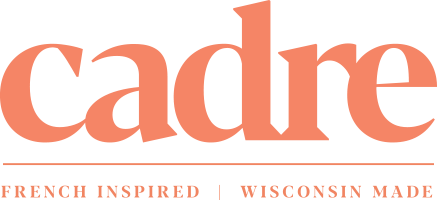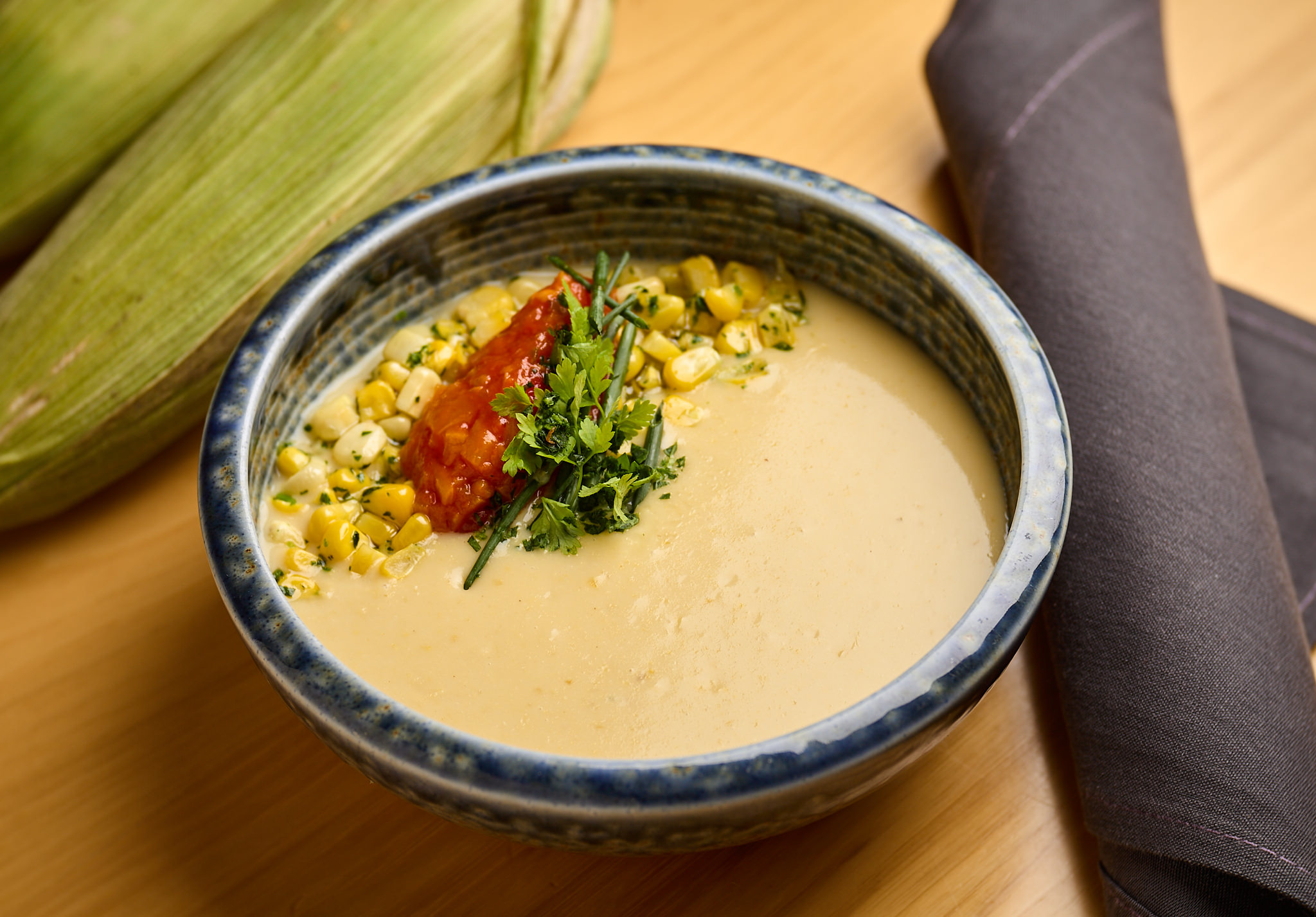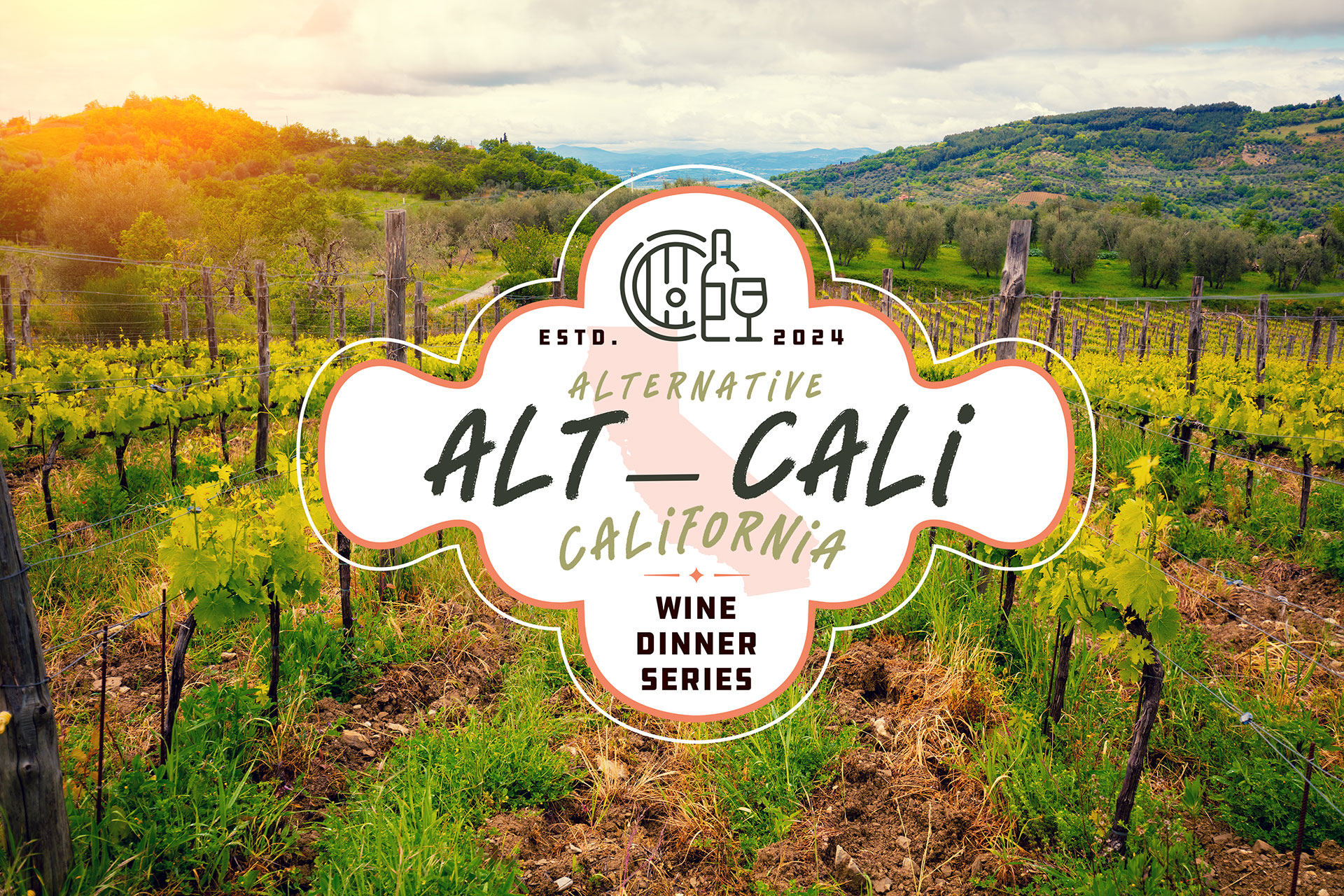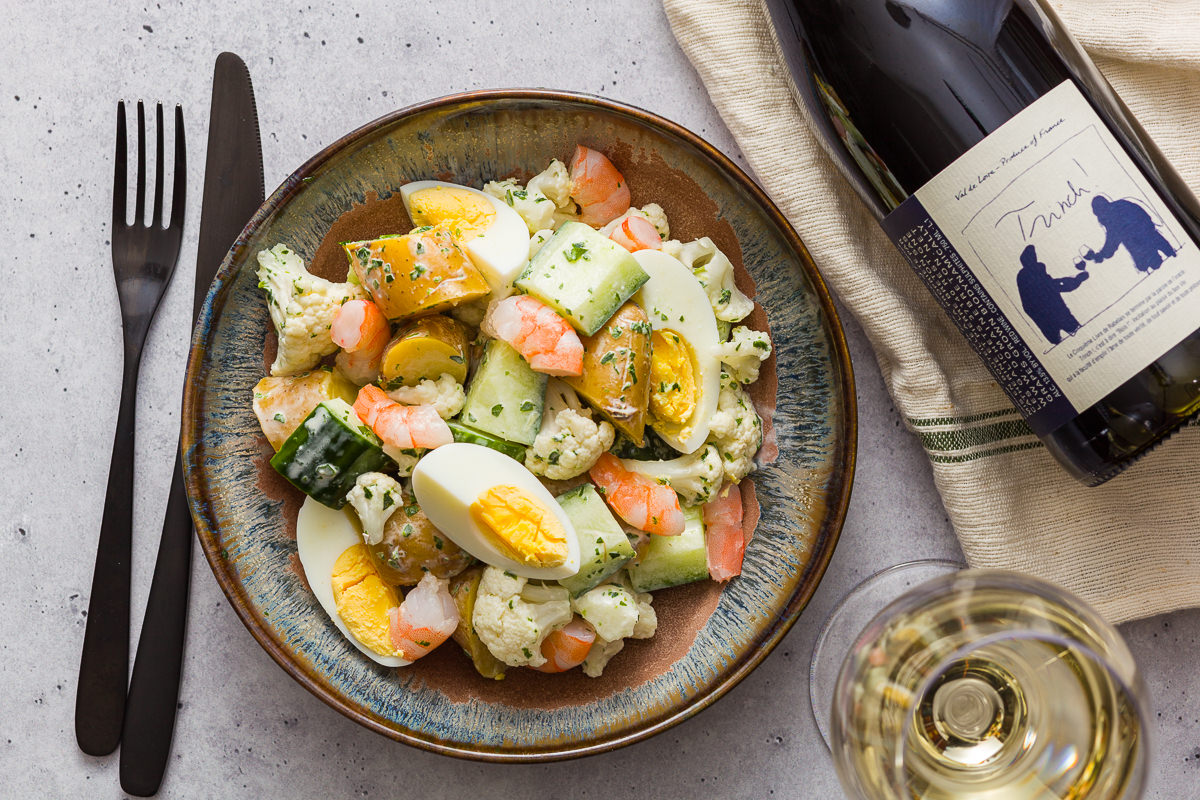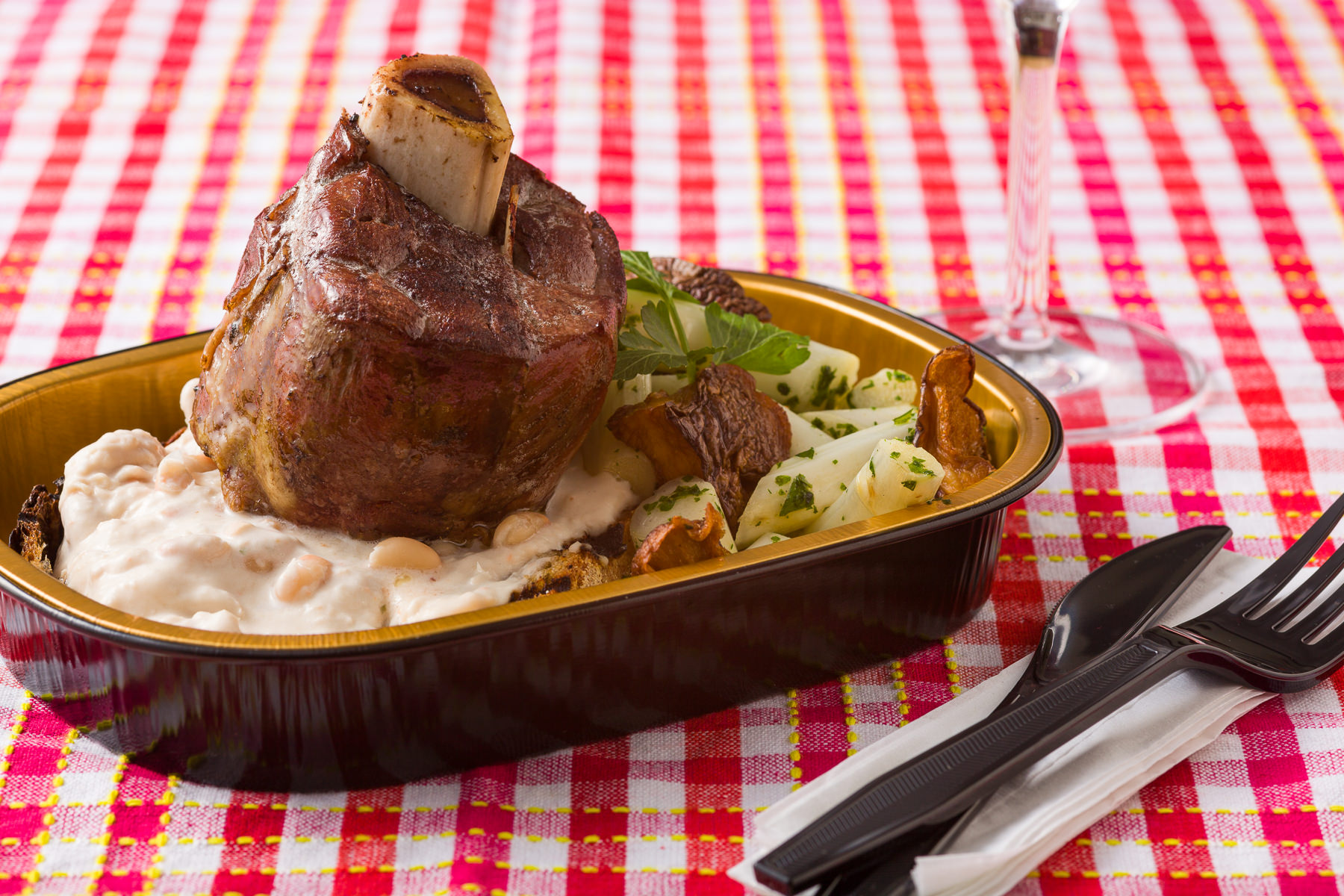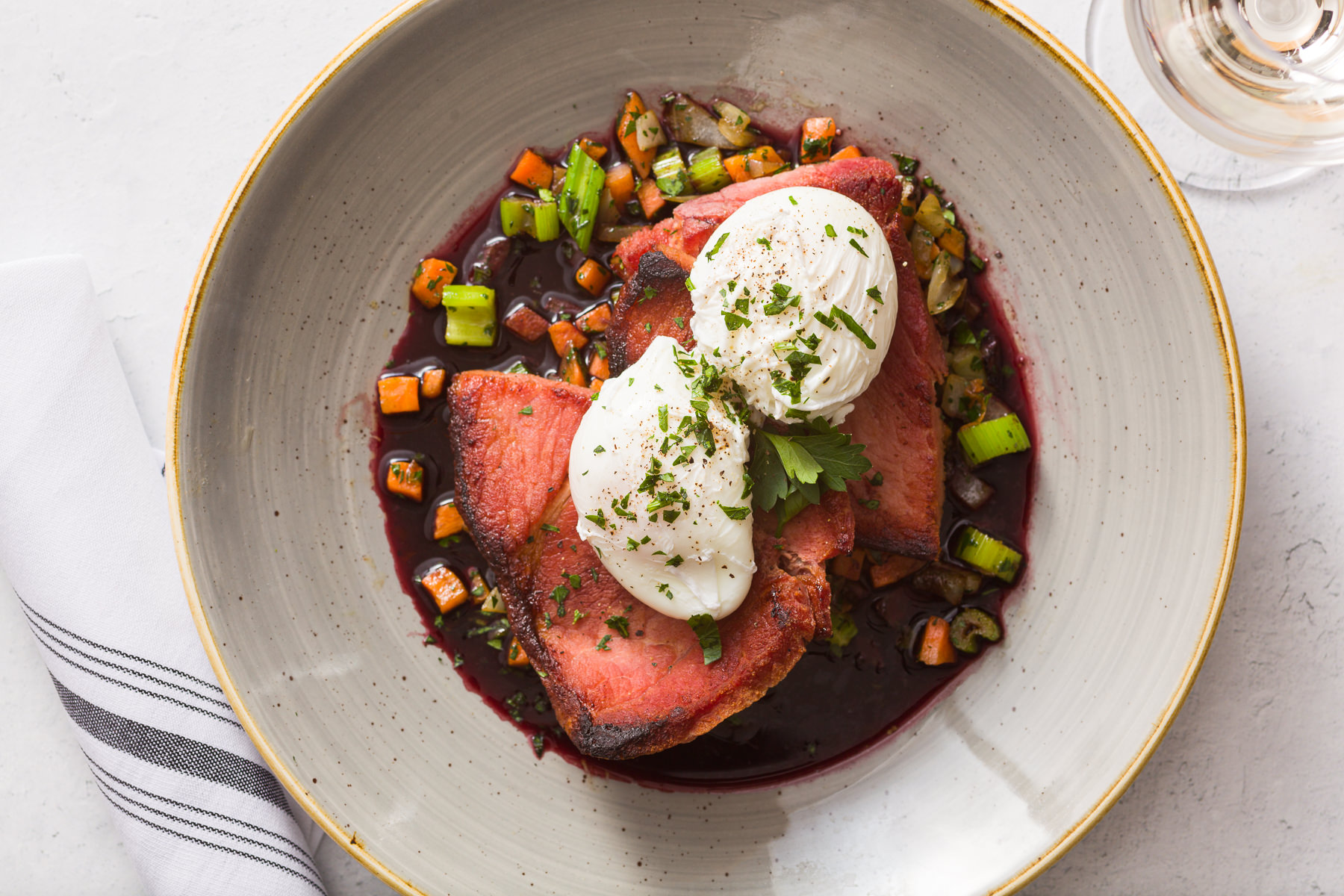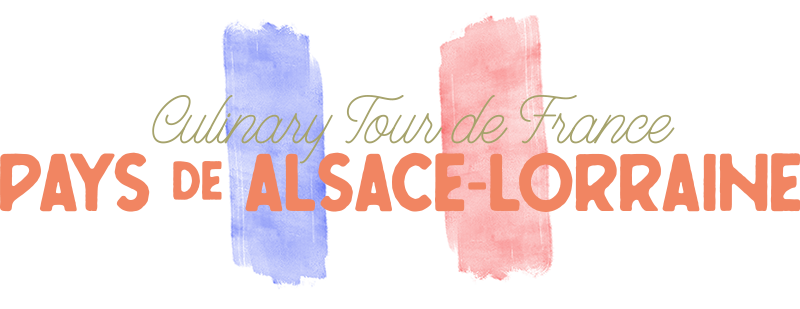
This week’s stop on Cadre’s tour of France is the historical region, or pays, of Alsace-Lorraine in Le Grand Est.
Located near the border with Germany on a plain bisected by the Vosges Mountains and Rhine River, this famously rich farmland is dotted by its idyllic painted timber-framed houses, built on strong stone bases. Here, a complex assortment of soils formed along a major fault line is well-irrigated and warmed by favorable dry winds. A perfect combination of environmental conditions, as well as a long history of settlement, has made Alsace an agricultural and culinary capital of Europe, one with its own unique language, customs, and traditions.
The cuisine of Alsace captures this history of influences. It has been a center of viticulture since Roman times, and today it produces some of the finest and most age-worthy white wines in the world. Its local bounty of foods both wild and cultivated is significant from foraged black walnuts and frogs to pork, potatoes, and fruit orchards. Alsace has also made its mark with the manipulation of these ingredients too, from distilled eau-de-vie to sausages and pastries. Of course, as an important crossroads through Europe, it has traded with or been invaded by many cultures, and each has left its own unique mark.
Alsace is an especially important French region to us at Cadre, as we feel its culinary heritage and climate is most similar to Wisconsin during the fall and winter season. From here on, we will begin to travel through France with an eye toward spring.
Let this meal give you comfort, energy, and hope.
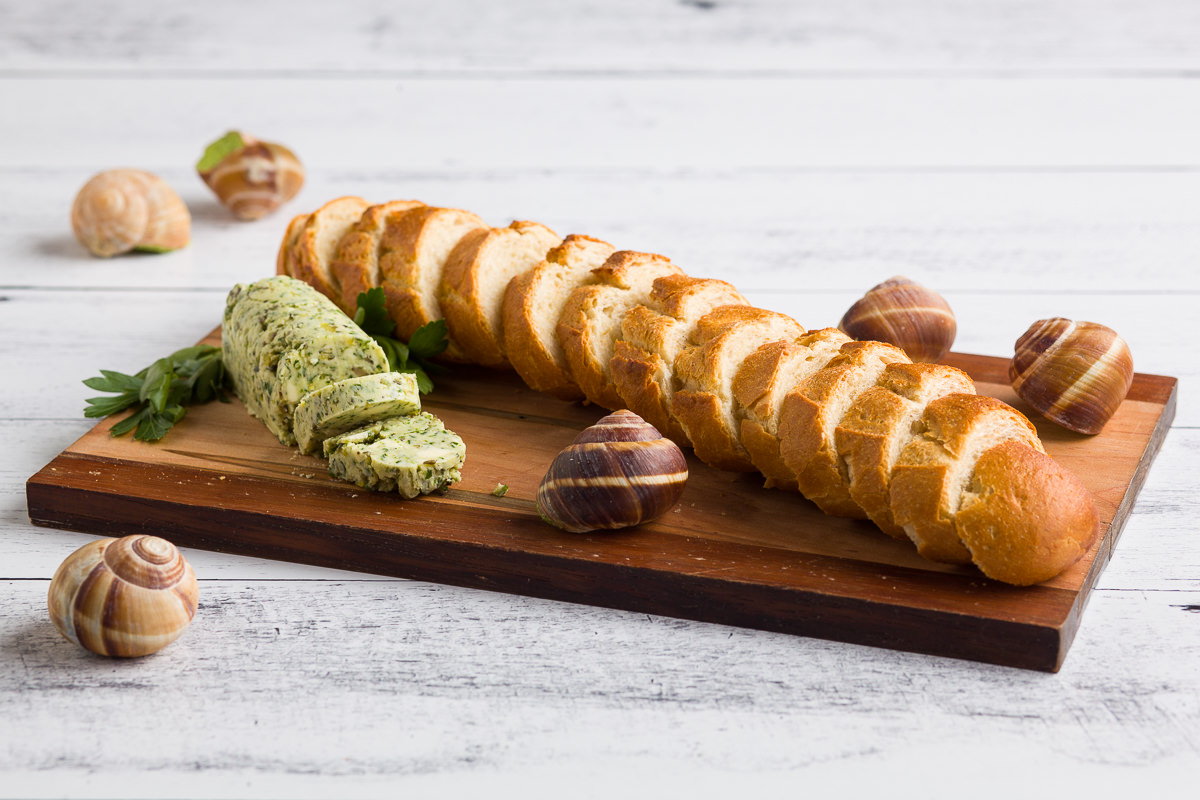
Escargot Butter
Edible snails are enjoyed as a delicacy all over Europe and the Mediterranean. In fact, evidence of heliciculture (snail farming), including selective breeding, snail pens, and special diets for fattening snails, has existed since Roman times. During the Middle Ages, snail consumption increased in France as a substitute for meat during Lent, and since the late 19th century Burgundy has become most famous for its own breed of snails and their method of serving them, in the shells with parsley compound butter. After learning that most of the snails consumed in France come from wild snails collected in the mountains of Eastern France and Germany we were inspired to make a classic compound butter for Pays de Alsace-Lorraine combining the escargot itself with parsley and garlic.
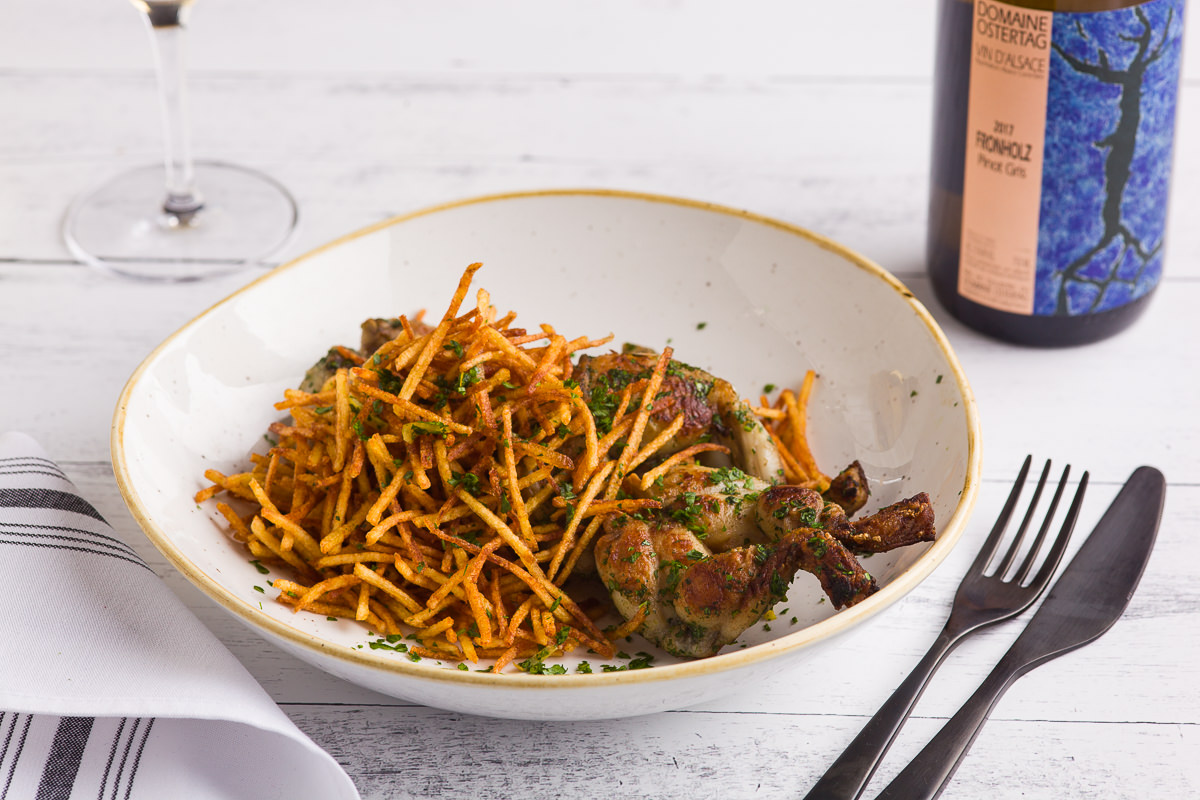
Frog Legs
Like escargot, frog legs were not considered meat and therefore widely consumed during Lent. Although in a modern context, frog-eating has become synonymous with the pejorative term for Frenchmen (“froggies”), there is some evidence to suggest that frog legs were a common source of protein for the pre-Roman Gauls, and a large cache of frog leg bones has even been found at Stonehenge in England. Today, the best edible frogs in France come from several species and two main varieties, red and green: Green frogs (Rana esculenta) are sourced from Dombes near Burgundy, and red frogs (Rana temporaria) are sourced from lowlands near the mountains of Eastern France including Jura (Franche-Comté), Ardennes, and Vosges (Alsace-Lorraine). Although a handful of specialty frog farmers are popping up, the demand is so high that many are now imported to France from Eastern Europe and Indonesia.
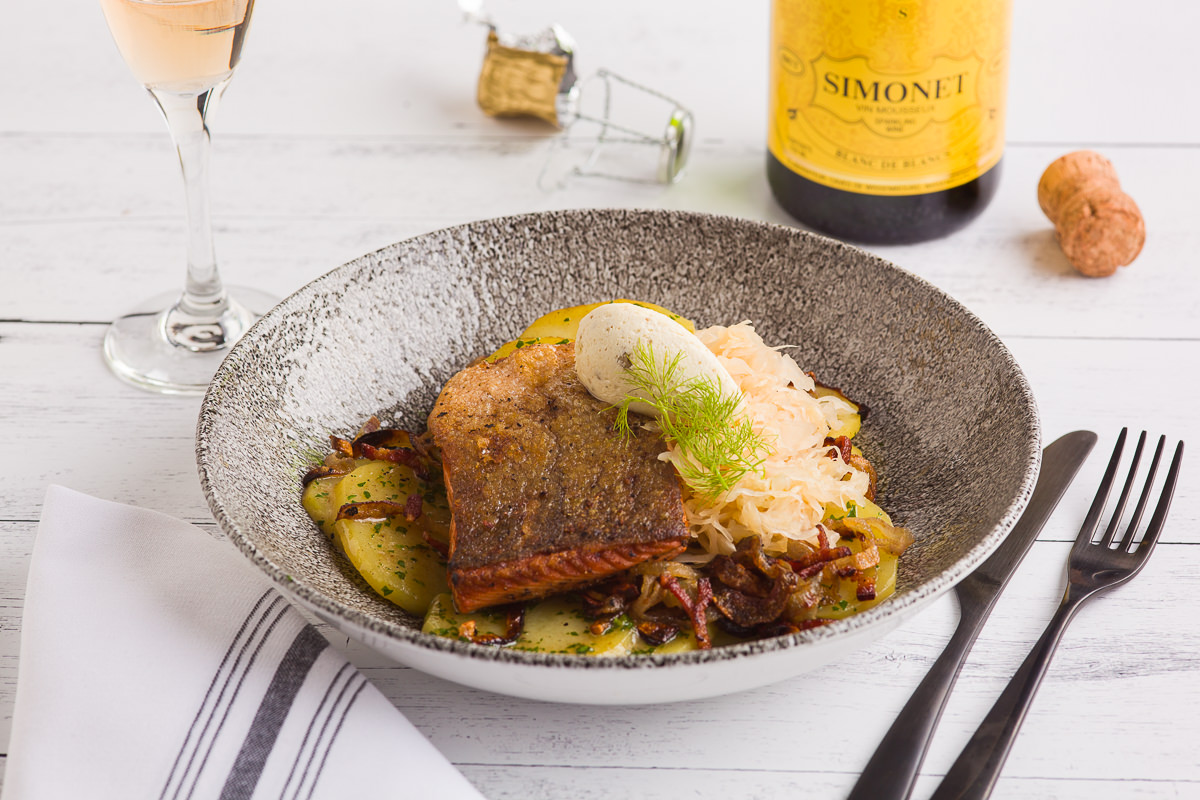
Sauerkraut with Salmon
Sauerkraut, or Choucroute as it is known in Alsace, is salted and pickled fermented cabbage. Although this dish was likely invented as a method for preserving vegetables for long winters, it provides a unique sweet and sour flavor profile that is often found in German cuisine but is less common in France outside of Alsace. Here choucroute is often eaten simply by itself or paired with pork belly and sausage (such as in Choucroute Garnie), but during Lent or religious holidays when meat was not consumed, it became common to pair with fish. Salmon is not a traditional Alsatian pairing where river fish would be used, but Robuchon noted that it became increasingly common in Alsatian restaurants during the latter 20th century. Cadre’s version with sockeye salmon is intended to be especially hearty and ideally paired with rich Alsatian riesling, pinot gris, or a light red.
Tofailles
Paired this week with the Sauerkraut Salmon, Tofailles is a general term from a dialect of the Vosges Mountains meaning ‘stewed’ or braised, but it often refers to a gratin dish of potato, bacon, and onion that is stewed in stock or wine. In the Alsatian dialect, the German-inflected name of this dish is Roïgebrageldi and in Lorraine it is often made with vin gris (“grey wine”) or pink-tinged wine made from red grapes.
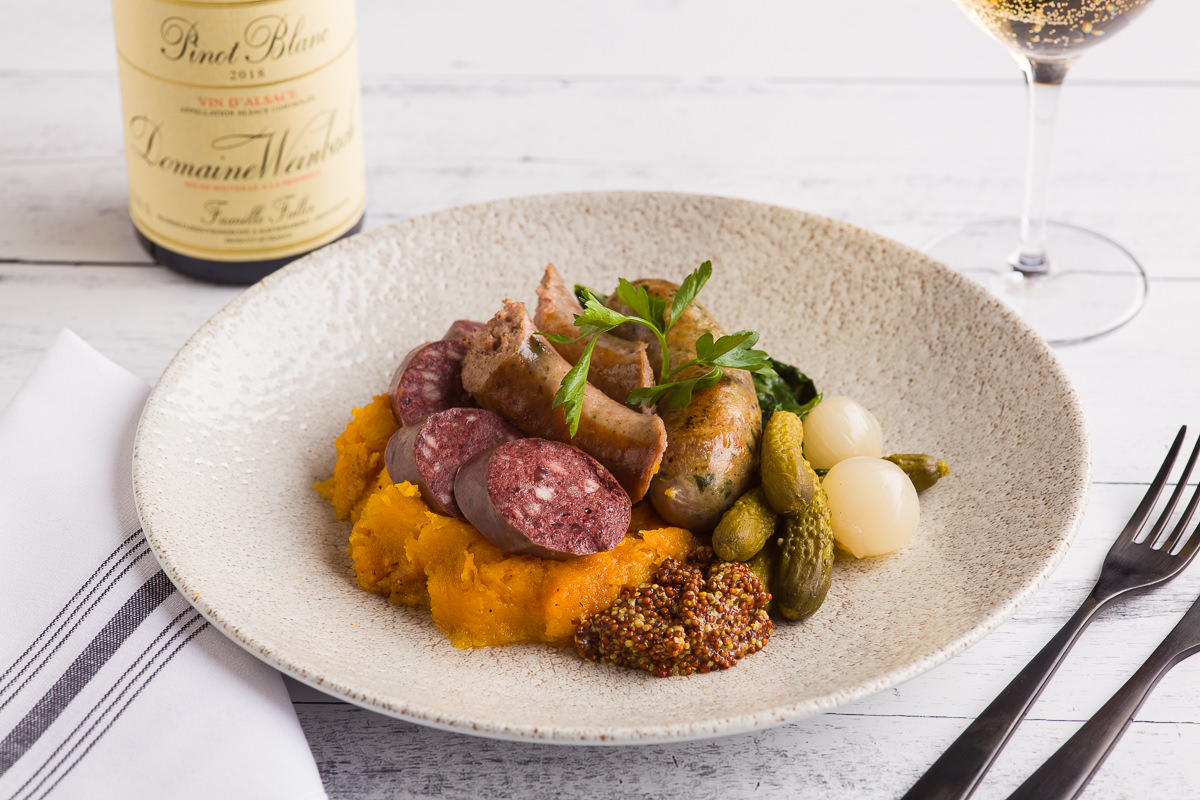
Trois Saucisses
Serving a variety of sausages with accompaniments is common in both Germany and Alsace. Here we’ve combined a traditional condiment (mustard) with pickled vegetables (cornichons and pearl onions), as well as a starch (mashed butternut squash), with three classic sausages:
- Bavarian Bratwurst: Many regional varieties of Bratwurst exist in Germany. This sausage was sourced from Enos Farms in Spring Green and is made from pork, black pepper, and mace.
- Andouillette: Not to be confused with Andouille (a Cajun sausage), various versions of Andouillette are made all over France from Loire to Champagne and Burgundy. Typically it is a coarse sausage made from pork tripe with wine and spices. This version was made in-house at Cadre with natural casings, additional pork shoulder, and pork belly.
- Boudin Noir: Cadre made this classic French version of blood sausage fresh for service in a natural casing using pork blood with sourdough miche, parsley, paprika, and bay leaf. The flavor is rich and herbal with a touch of spice on its sanguine, iron-like finish.
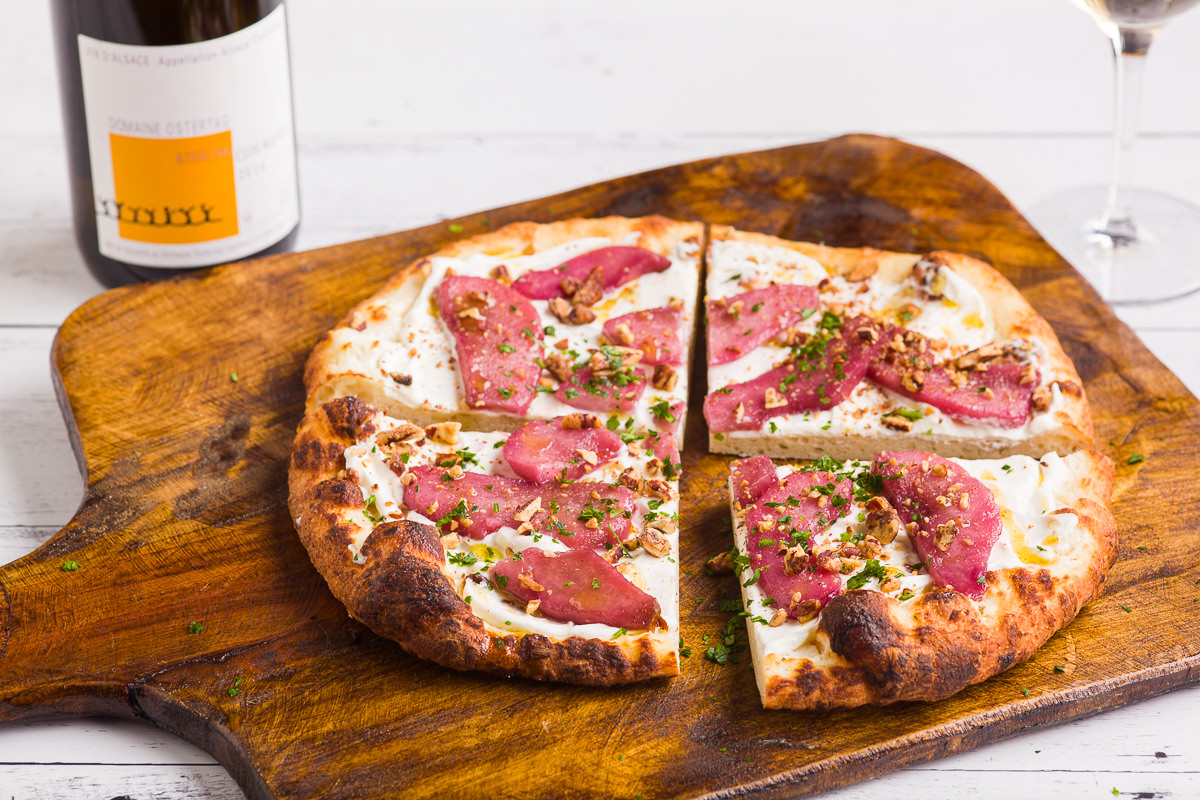
Tarte Flambée
Also known as Flàmmeküeche (Alsatian) or Flammkuche (Lorraine), roughly translates to “flamed bread” and is a common farmer’s dish found on both sides of the border region of Alsace-Lorraine between France and Germany. It is said that the dish originated from the use of communal ovens (typically located in the center of villages near churches) where groups would meet to bake bread once per week on worship days. Balls of dough would be thinly rolled by hand and tossed into the wood-fired ovens to test temperatures, becoming crisp in the process. Over time the addition of cheese, cream, and other garnishes created many sweet and savory versions of the flamed cake. In the 19th century, these cakes began to show up in more restaurants in the region and by the 1960s the rising popularity of pizza helped spread the Tarte Flambée (aka “Alsatian pizza”) to all of France.
